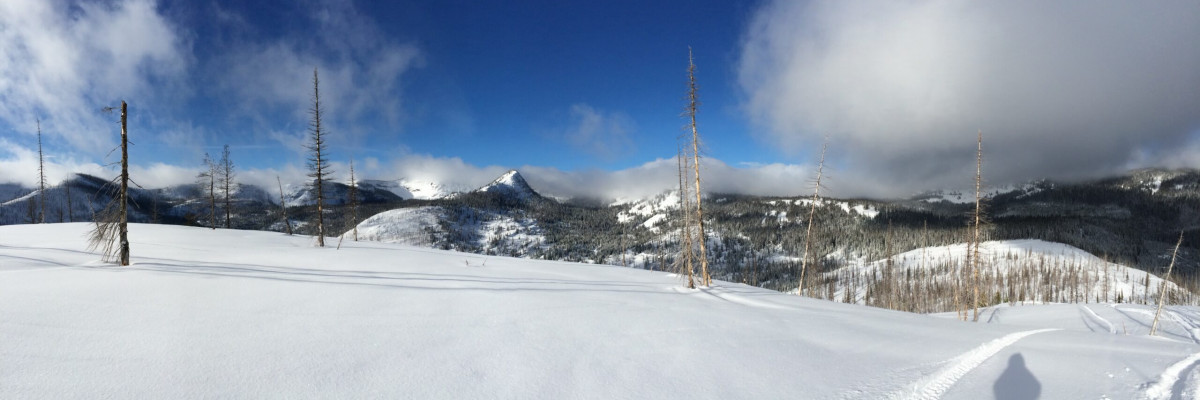Above 6000 feet, the avalanche danger is MODERATE on wind loaded terrain steeper than 35 degrees. Natural avalanches are unlikely, human triggered avalanches are possible. It is still possible to trigger an avalanche on steep leeward terrain or in shallow snow in rocky terrain.
On terrain less steep than 35 degrees and below 6000 feet, the avalanche danger is LOW. Natural and human triggered avalanches are unlikely. Conditions are generally safe but be aware that unstable snow exists in isolated areas such as pockets of snow less than 4 feet deep that are in rocky areas that have been wind loaded from the top or sides.
Good morning backcountry skiers and riders! This is Steve Karkanen with the January 13, 2015 backcountry avalanche advisory issued by the West Central Montana Avalanche Center. This information is the responsibility of the Forest Service and does not apply to operating ski areas.
Mountain temperatures are in the twenties this morning with 20 mph winds from the west. Skies are cloudy and we have not received any precipitation the past 24 hours.
Moderate temperatures the past few days have increased the overall stability of our mountain snowpack. The deeper weaknesses we’ve been talking about have gained a lot of strength but still demand attention. It’s enough to keep the adjective rating at the moderate level. What we’ve seen the past 2-3 days is giving us more confidence that we’ve transitioned out of the more dangerous conditions of the past several weeks and are now watching how the surface layers will react with new snow.
























